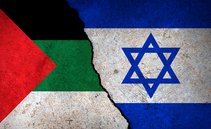In this article, we’ll analyze the history and goals of the Houthis, a military force with an important role in the Israel-Hamas war.

Who are the Houthi rebels and what is their final goal? From controlling half of one of the world’s poorest countries to disrupting the entire global trade, the Houthis have made headlines as the latest development in the Israel-Hamas war.
The Houthis operate in Yemen, the poorest country in the Middle East and one of the poorest countries in the world. Yemen has been torn apart by an extremely bloody civil war, considered by many the bloodiest conflict of the XXI century.
In this article, we’ll analyze the history and geopolitics behind the Houthi Rebels’ rise to power and their role in modern Middle Eastern politics.
The strategic importance of Yemen
Before delving into the history of the Houthis, it’s important to understand why Yemen is so strategically important despite being so poor.
Yemen sits on the Bab El Mandeb Strait, one of the two entrances into the Red Sea (the other being the Suez Canal). The strait is crossed daily by most of the world’s trade, preventing the circumnavigation of Africa and shortening the journey by several days.
Although the Suez Canal is probably the most famous strait, Bab El Mandeb is equally important. Controlling either the Suez Canal or the Bab El Mandeb Strait means controlling most of the world’s trade.
Such is the importance of the Bab El Mandeb Strait that the British Empire established a colony in Yemen already in 1839, decades before the Suez Canal was built.
Finally, it’s important to note that most of the world’s crude oil also passes through this strait. The oil extracted in the Middle East in countries like Saudi Arabia, the United Arab Emirates, and Kuwait is forced to pass the Bab El Mandeb Strait to reach Europe and the United States.
Who are the Houthi Rebels
The Houthi movement was born in the 1990s as a Yemeni Islamist sect, officially known as Ansar Allah (Supporters of God). They follow the Shia faith, a “branch” of Islamism that differs from the Sunni faith. Clashes between these two faiths date back thousands of years.
Until 1990, Yemen was split into two different countries: North and South Yemen. Both nations had passed through a civil war between Sunni and Shia elements, and it was hoped that unification would bring about peace.
However, the Houthis became increasingly vocal against the Sunni-led governments between the 1990s and the 2000s. At the same time, they were gathering the support of the Yemeni population by establishing school lectures and summer camps.
After the movement’s founder, Hussein Al-Houthi, was killed in 2004, mass demonstrations occurred in the streets of Saana, Yemen’s capital.
It was the start of a military insurgency that would last until 2010 when the Yemeni government seemingly managed to put the fire out. The official Yemeni government was backed (and still is today) by Saudi Arabia, a Sunni country with the strongest military in the Middle East at the time.
However, the ceasefire had a very brief life, and hostilities resumed one year later.
The Yemeni Civil War
In 2011, the whole Arab world was in flames. The Arab Springs were overturning decades-long dictatorships, and people were demanding change.
In this context, the Yemeni civil war started with a reinvigorated Houthi movement. Although the Yemeni central government was still backed by Saudi Arabia, there was a new player on the table: Iran.
Iran is the largest and most influential Shia country. It’s Saudi Arabia’s biggest rival and its main threat in the region.
It is now clear that Iran started backing the Houthi Rebels with armaments and equipment, turning them into a fierce fighting force. In 2015, after years of bloody fighting, the Houthis unexpectedly seized Saana and took control of the presidential palace.
This was a major blow for Saudi Arabia, who in response led a bombing streak on Houthi-controlled objectives. Such bombings were helped by US intelligence and planning.
Some estimates put the death toll of the Yemeni civil war at over 377,000. Of these, about half were killed violently while the remaining starved or died by illness in the humanitarian crisis caused by the war. 4 million people are believed to be displaced from their homes.
In 2022, the Yemeni central government and the Houthis reached a ceasefire. At the moment, the Houthis control most of former North Yemen, and are considered the most stable force in the country.
What do the Houthis want
The Houthis’ main allies in the region are Iran, Syria, Hezbollah, and Hamas. It is no surprise, therefore, that the Houthis’ main slogans are anti-US, anti-Israel, and anti-West.
leggi anche
Who is right between Israel and Palestine?

After the outbreak of the Israel-Hamas war, the Houthis tried to support Palestine by launching rockets at Tel Aviv and other Israeli cities. These missiles were intercepted by the American carriers deployed in the region, and none reached its final destination.
As this strategy seemingly didn’t work, the Houthis started targeting objectives closer to them, namely trade shipping passing through the Bab El Mandeb Strait. They claim to have targeted only ships en route to Israel, but this threat prompted many shipping companies to make the long journey around Africa, disrupting global trade.
The United States tried countering this threat by creating a Western-led naval task force. However, not all European nations agreed, and the US only received material support from the United Kingdom.
Nevertheless, the combined American and British naval power seems to be holding back the Houthis for the moment, but it represents another dangerous escalation in the conflict.





